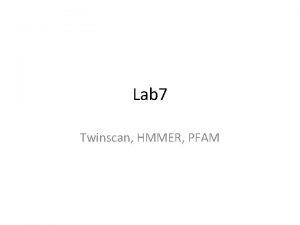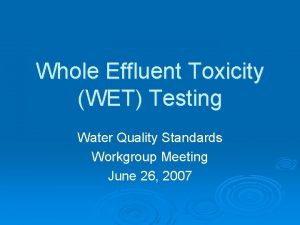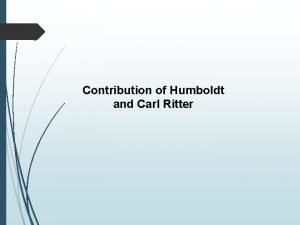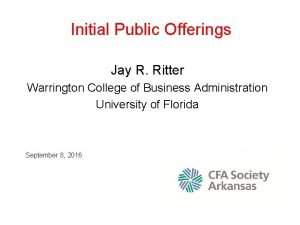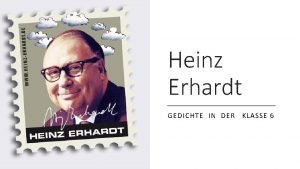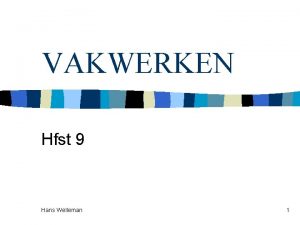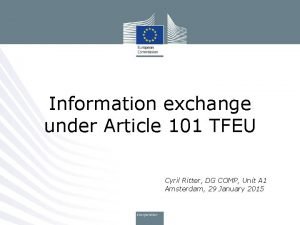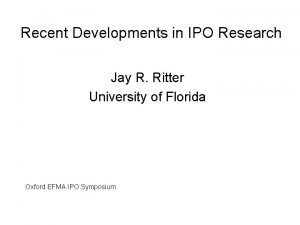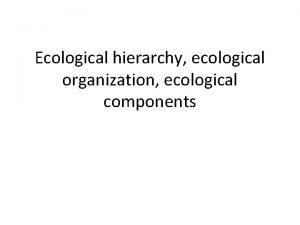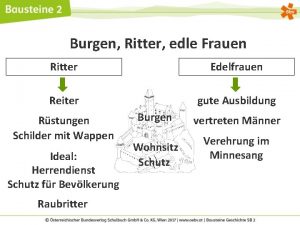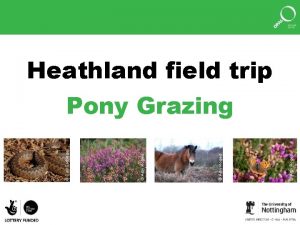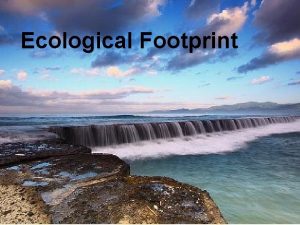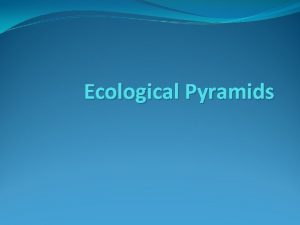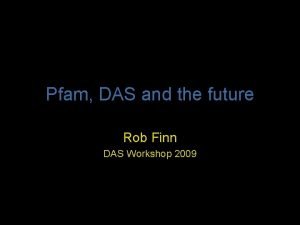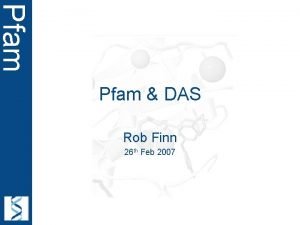PFAM Ecological Modeling Sensitivity Amy Ritter and Dean















- Slides: 15

PFAM Ecological Modeling Sensitivity Amy Ritter and Dean Desmarteau Waterborne Environmental, Inc. 1 Photo credit: Andrew Eatherall

Overview § Rice agriculture § USEPA rice models § Modeling versus monitoring § Ecological modeling sensitivity § Summary Waterborne Environmental, Inc. 2

Rice Agriculture § Rice paddies may be drained during the year (tillage, pesticide application, dry seeding, harvest) § Rice is rotated with dryland crops (in some areas more than others). § Therefore, a receiving waterbody outside of the paddy should be considered in ecological risk assessment. Waterborne Environmental, Inc. 3

Tier I Rice Model USEPA Tier I Rice Model - Screening model to assess exposure at or near the paddy Cw = mai/(0. 00105 + 0. 0000013 Koc) Where Cw = water concentration (ug/L) mai = mass applied per unit area (kg/ha) Koc = partition coefficient (L/kg) Surface Water – 10 cm Sediment – 1 cm Pesticide in Flooded Agriculture Model (PFAM) Waterborne Environmental, Source: USEPA, September 2016. Development of a Conceptual Model to Estimate Pesticide Concentrations for Human Inc. Health Drinking Water and Guidance on Conducting Ecological Risk Assessments for the Use of Pesticides on Rice 4

PFAM – Pesticide in Flooded Agriculture Model § Ecological scenarios § Standard with turnover* • 11 scenarios in AR, CA, LA, MO, MS, and TX • With and without winter flood § No turnover • 11 scenarios in AR, CA, LA, MO, MS, and TX • With and without winter flood § Nonstandard • 15 scenarios in AR, CA, LA, MO, MS, and TX • Dry seed, water seed, ratoon, post- and pre-floods, delay and pinpoint floods * Rice growers in CA have reported that turnover (at a low rate) is maintained in most rice paddies to prevent algae growth. A turnover rate of once every 60 days is utilized in the PFAM scenarios with turnover (USEPA, 2016). Waterborne Environmental, Inc. Photo credit: Hirozumi Watanabe 5

Adding Receiving Waterbody Model to Ecological Scenario - Concept Verification § § PFAM (version 1) PFAM (version 2) Compound A Pond Waterbody Rice Paddy Input Parameter Koc, ml/g 350 Water column half-life, d @ 25 o. C 10 Benthic half-life, d @ 25 o. C 15 Unflooded half-life, d @ 25 o. C Near-surface photolysis half-life, d 1. 00 E+08 Molecular wt. 200 Vapor pressure, torr Solubility, g/ml Application rate, kg/ha Pond 30 100 at 40 lat Hydrolysis, d Heat of Henry, J/mol @ 25 o. C Release Compound A Value Application date Area of application, m 2 Scenario 1 9. 00 E-07 150 60000 1. 0 30 -May 100000 ECO CA Winter no. Turn. PFS Waterborne Environmental, Inc. 6

Results of Concept Verification PFAM Version Drift factor Receiving Waterbody Type Area of surrounding watershed, m 2 Curve number of surrounding watershed Base flow in receiving water, m 3/s Waterbody width, m Waterbody depth, m Waterbody length, m In Paddy Concentrations (1 -in-10 yr, ppb) 1 -day average 4 -day average 21 -day average 60 -day average 365 -day average Version 2, no Version 2, with receiving waterbody 0 0 None Pond --0 --70 --100 --2 --100 944 838 481 218 37. 3 Receiving Water (Pond) Concentrations (1 -in-10 yr, ppb) 1 -day average -4 -day average -21 -day average -60 -day average -365 -day average -- Version 1, with receiving waterbody 0 Pond 0 70 0 100 2 100 944 838 481 218 37. 3 ------ 17. 6 16. 2 10. 9 5. 42 0. 965 18. 2 (peak) 16. 5 11. 1 5. 59 0. 997 Waterborne Environmental, Inc. 7

Canal as a Receiving Waterbody Canal or Stream (1 m depth) 40 m Rice Paddy Flow Release 3 m Waterborne Environmental, Inc. 8

Chemicals with Rice Use Analyzed for Comparison of Ecological EECs and Monitoring Data Input Parameter Molinate Propanil Thiobencarb 186 489 1628 1. 00 E+08 6 1. 00 E+08 25 25 20 1. 00 E+08 9 1. 00 E+08 20 25 20 1. 00 E+08 2 246 23 25 25 1. 00 E+08 103 190 40 40 40 Hydrolysis, d 1. 00 E+08 Molecular wt 221 218. 08 257. 78 5. 30 E-03 9. 10 E-07 2. 20 E-05 970 152 27. 5 48780 55000 45727 Henry ref temp, o. C 20 25 20 Application rate, kg/ha 4. 5 5. 6 4. 5 24 -May, 24 -June 2 -Jun 24 -May 100000 Koc, ml/g Water column half-life, d Ref temp, o. C Benthic half-life, d Ref temp, o. C Unflooded half-life, d Ref temp, o. C Near-surface photolysis half-life, d Ref lat, o Vapor pressure, torr Solubility, g/ml Heat of Henry, J/mol Application dates Area of application, m 2 Scenario ECO Std with turnover, CA Winter. PFS Source: USEPA, September 2016. Development of a Conceptual Model to Estimate Pesticide Concentrations for Human Health Drinking Water and Guidance on Conducting Ecological Risk Assessments for the Use of Pesticides on Rice Waterborne Environmental, Inc. 9

Comparison of Tier Results and Monitoring Data* Max. Conc. - all data (ppb) Max. Conc. - small waterbodies (ppb) Molinate 44. 09 (n = 6220) 23. 7 (n = 1960) Propanil 47 (n = 2586) 47 (n=772) Thiobencarb 37. 4 (n = 7867) 9. 7 (n = 1949) Tier I Equation Koc (m. L/g) Application rate (kg/ha) Number of apps. Total applied (kg/ha) Concentration (ppb) Model ÷ Monitoring 186 4. 48 2 8. 96 6936 157 489 5. 60 1 5. 60 3322 70. 7 1628 4. 484 1416 37. 9 2 -Jun 5130 109 24 -May 4070 109 PFAM Model – ECO Standard with Turnover, CA_Winter. PFS App. Date May 24, June 24 Concentration (1 -d average ppb) 4280 Model ÷ Monitoring 97. 1 PFAM Model – ECO Standard with Turnover, CA_Winter. PFS with a Receiving Waterbody Paddy output (1 -in-10 yr, ppb) 1 -day average 4280 5130 Model ÷ Monitoring (paddy) 97. 1 109 4070 109 Canal (40 m length x 3 m width x 1 m depth) with 0 m 2 area of surrounding watershed Base flow in receiving water, m 3/s 1. 33 0. 133 24. 2 0. 647 141 3. 77 Watershed (Canal) output (1 -in-10 yr, ppb) 1 -day average Model ÷ Monitoring (canal) 12. 8 0. 290 119 2. 70 20. 434 199 4. 23 *CDPR Surface Water Monitoring Database, 2016 Waterborne Environmental, Inc. 10

Sensitivity Simulations of Paddy and Receiving Waterbody (Canal) Eco standard CA Winter, Turnover Scenario § Molinate § Parameters varied • Base flow in canal • Holding time in paddy • Drift onto canal • Turnover in paddy http: //www. calrice. org/ • Paddy size • Surrounding area size • CN of surrounding area Waterborne Environmental, Inc. 11

PFAM 90 th Percentile EECs in Paddy and Canal Run parameters Eco. Scen. Run 1 Run 2 Run 3 Run 4 Run 5 Run 6 Run 7 Run 8 Run 9 Run 10 Run 11 Drift factor 0 0 0. 0036 0 0 Run 12 0 Drain date 25 -Sep 1 -Jul 15 -Jul 25 -Sep 25 -Sep 100000 Area of surrounding wshed, m 2 --- 0 0 0 0 0 100000 CN of surrounding watershed --- 70 70 70 90 Base flow in receiving water, m 3/s --- 1. 33 0. 133 0. 133 Waterbody width, m --- 3 3 3 Waterbody depth, m --- 1 1 1 1 1 0. 5 1 1 Waterbody length, m --- 40 40 40 Turnover Yes Yes Yes No No Yes Yes Yes 100000 100000 100000 100000 1 -day average 4280 4280 4380 4280 4280 21 -day average 1590 1580 1590 1790 1590 1590 90 -day average 776 776 657 726 776 904 776 776 776 Paddy area. , m 2 Paddy output (1 -in-10 yr, ppb) Watershed (canal) output (1 -in-10 yr, ppb) 1 -day average -- 12. 8 119 887 367 119 82. 3 12. 8 119 115 21 -day average -- 2. 89 28. 5 58. 6 39 28. 5 4. 15 2. 89 2. 95 28. 4 90 -day average -- 1. 26 12. 5 19. 6 15. 5 12. 5 1. 34 1. 26 1. 29 12. 5 12. 4 Run 1 Run 2 Run 3 Run 4 Run 5 Run 6 Run 7 Run 8 Run 9 1000 Canal 1 -day average concentration, ppb 900 800 700 600 500 400 300 200 100 0 Run 11 Run 12 Waterborne Environmental, Inc. 12

Turnover Compared to No Turnover Application day + Overflow Manual release Waterborne Environmental, Inc. 13

Summary of Sensitivity § § § Flow is a sensitive parameter for the receiving waterbody. Changing the mixing cell (canal) dimensions was not sensitive unless the user changes flow and drift factors accordingly. Currently, holding time is not taken into consideration with acute concentrations in the paddy. However, it is a sensitive parameter for canal concentrations and chronic paddy concentrations. Turnover is more sensitive in the canal than in the paddy. Drift factor does not appear to be highly sensitive due to the lower mass of drift compared to the mass from paddy draining or overflow. However, further analysis would need to be done to determine appropriate drift factors for a paddy-canal system. For CA, canal concentrations are not very sensitive to surrounding area size due to low rainfall and timing of rainfall with rice production. This parameter is more sensitive in regions with higher rainfall. Paddy may not be a sustainable environment for aquatic species such as fish. Therefore, a receiving waterbody for ecological assessments should be considered. Waterborne Environmental, Inc. 14

Thank you! Questions? Photo credit: David Rosen For more Information, please contact Amy Ritter at rittera@waterborne-env. com Waterborne Environmental, Inc. 15
 Pfam
Pfam Pfam scan
Pfam scan Dean d dean
Dean d dean Modeling role modeling theory
Modeling role modeling theory Dimensional modeling vs relational modeling
Dimensional modeling vs relational modeling Contribution of carl ritter
Contribution of carl ritter La geografia se divide en
La geografia se divide en Jay ritter university of florida
Jay ritter university of florida Gedichte für 6. klasse
Gedichte für 6. klasse Hans welleman
Hans welleman Kanzler palpatine schauspieler
Kanzler palpatine schauspieler Andrea ritter
Andrea ritter Ritter 1991
Ritter 1991 Cyril ritter
Cyril ritter Peggy borum uf
Peggy borum uf Jay ritter ipo
Jay ritter ipo

